So how did the duplicate work out?
We are no longer building saddle trees, but we have two videos about how Western saddles fit horses available on our westernsaddlefit.com website.
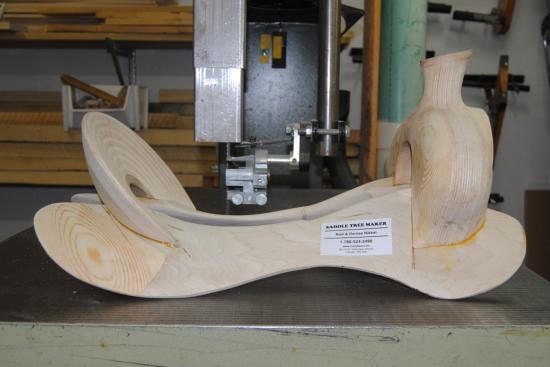
After the previous posts I have written about how this tree was built differently than ours, maybe you're wondering how the new one turned out? Some trees are much easier to duplicate than others, based on how differently the tree maker's angles, shapes, etc. are from ours. This one was a doozy! Here is the finished tree in the wood. Does it look identical to the first one? No. Will the old leather fit back on it? Yes. And that is the whole point. Here are some of the key things we considered when building this tree.
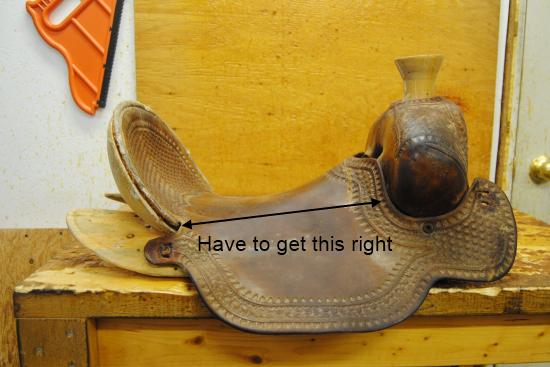
A key thing to get right is the distance between the point of the cantle and the fork where we commonly measure thigh length. If that is too long or too short, the seat leather won't fit, and that is a big chunk of leather to have to replace.
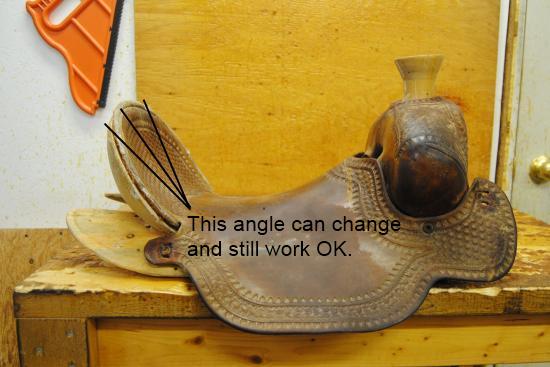
The seat length isn't as critical to get the same, since the leather can tip up or lay back to fit the cantle angle. The cantle height, as measured at the back of the bars, doesn't have to be the same either for the same reason. But we still do have to have the stitch line on the leather arrive at the top of the cantle for the leather to go back around the cantle properly.
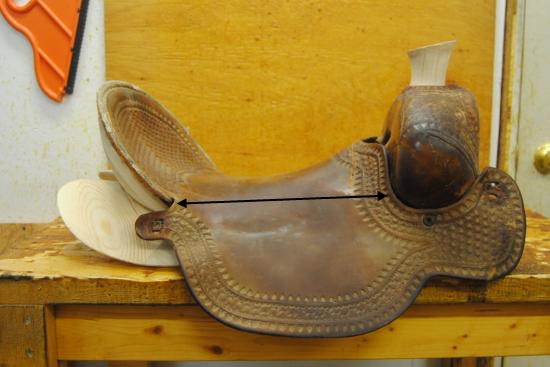
This one was very hard to get right because both the fork and the cantle on the original tree were more stood up than anything we have ever made. This resulted in a long thigh length and a short seat length. (Please see our Seat Length and Thigh Length Relationships page for more explanation of these ideas.) However, as I just said, the thigh length is critical to get correct for the old leather to go back on. And in this case, the customer wanted the cantle laid back a bit more anyway as his back has connected with it a few times over the years. So... first we got the thigh length the same so the seat leather fits back on.
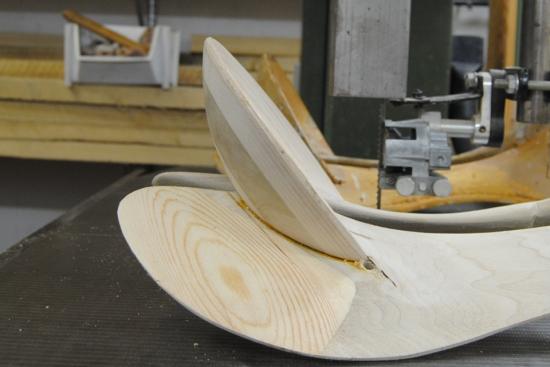
As you can see, the new cantle is laid back more than the old one. This one is a Taylor at 42.5 degrees (a measurement taken off our jig, and not measurable in any way, shape or form on the tree). The original would be more stood up than what our most-stood-up 45 degree cantle is.
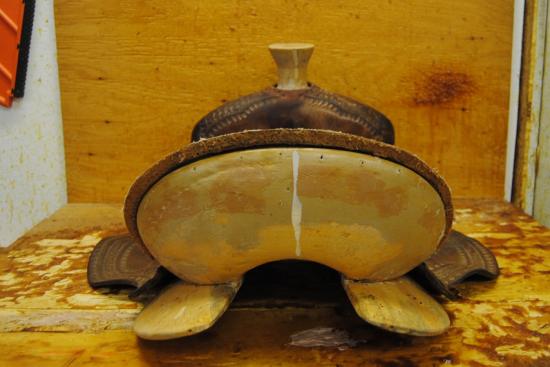
However, this also meant that the cantle is shorter than the original, which was 5 1/2" tall. I originally marked it out to end up at about 5" tall, but that was still too tall. The stitch line was about 1/2" down the face of the cantle. (I have since figured out why this happened. We learn a lot from the tough ones!!) And the stitch line needs to come around the edge of the cantle so the old stitch holes can be reused, as for the original tree.
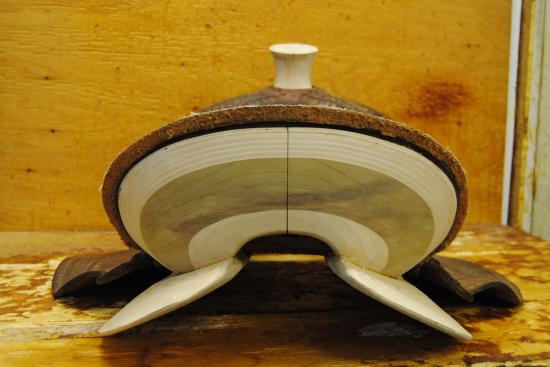
So Rod reworked the cantle top till the seat leather fit back on it properly. It turned out that the new one is only 4 1/2" tall. The customer will have to modify the cantle back leather a bit, but he is OK with that. He really doesn't want to connect with the top of the cantle again! The amount of change that occurred is due to the modification he wanted. If he had wanted a similar cantle height and angle to the original, we would have done things differently.
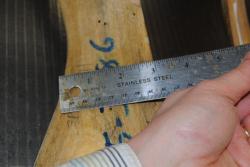 |
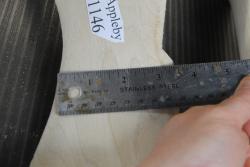 |
The other major change we made was increasing the depth of the bars themselves. This puts more surface area on the horse and therefore lowers the PSI at any one place - provided the bar shape matches the shape of the horse, of course.
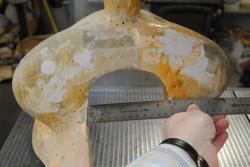 |
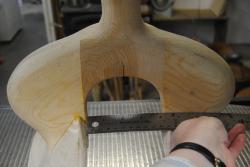 |
Rod did this by adding the width toward the center of the tree, bringing the bars up higher on the horse's back. This narrowed the hand hole width from over 4 1/2 inches wide to 4 inches wide, which is what Rod and the customer worked out to fit his horses best. So how will this affect using the old skirts?
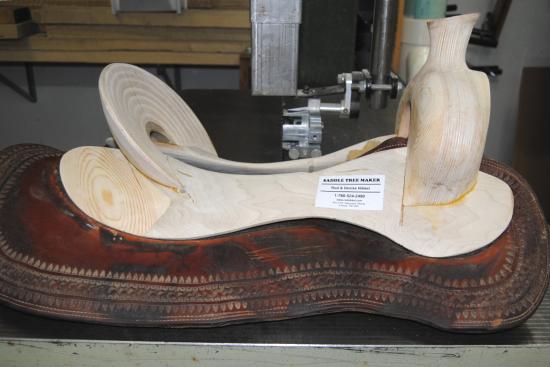
Not a lot. Rod used the outline pattern from the old bars so they would fit into the old skirts just right.
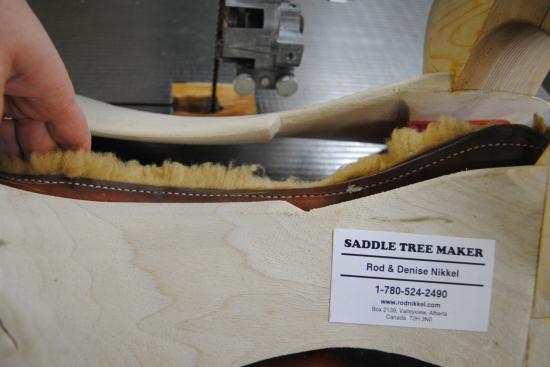
The bars do come up higher toward the inside of the skirts than the original bars did, but they don't come right up to the edge so they won't form a line of pressure there.
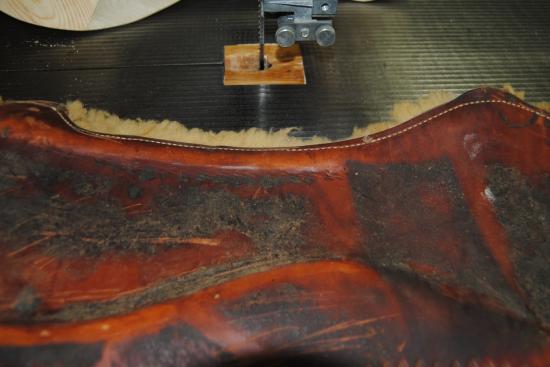
The customer will have to do some re-molding (blocking) on the inside edge of the skirts, but for the sake of the horses, that will be worth it. (And yes, we did put in a full stirrup groove!)
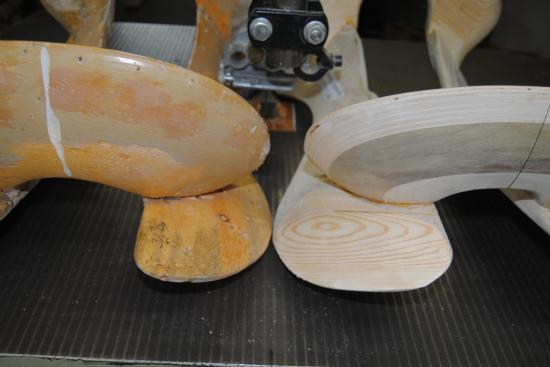
This picture gives a good representation of the difference in bar surface area now, and that can't help but benefit the horses.
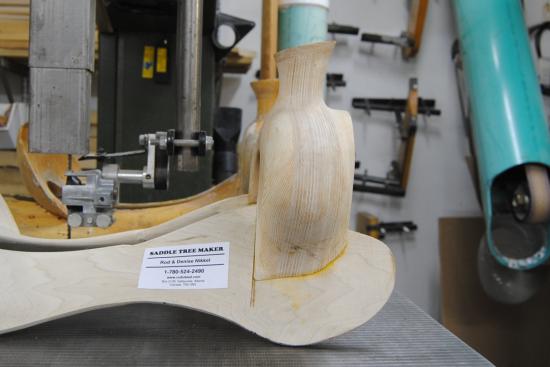
The fork on our tree is tipped ahead just a tiche more than the original, but again, the leather will fit back on it OK. (Trying to make it the same would have caused earthquakes in different parts of the world as the earth re-aligned on its axis, and we didn't want anybody to get hurt...) The horn is no longer leaning back compared to the fork, and the neck is shaped a bit differently to handle a rope better. The horn cap ended up having a bit more pitch than the other tree (still less than we normally use) which will require a bit of a modification on the horn wrap, but the owner isn't too concerned about this either.
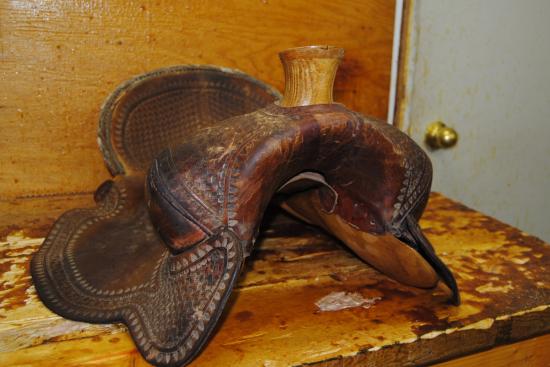
The fork cover fits nicely over the fork as well, so we got the shape right. It is unusual in that it does not have a separate gullet piece, but is a single piece of leather that wraps all the way around the gullet. Rod was impressed that the customer was able to get it off the original saddle without undoing the welts, as it is pretty tight. Good job on that one!
Rod will be rawhiding this tree on Saturday. Once it is all dry, about two weeks from now, he will try all the leather on everything again just to see what else he can learn from it. This one definitely has been a learning experience for us! (Hey, if we knew everything, it would be time to quit, and I don't see us quitting for that reason - ever!!!)
But all of this still doesn't explain why the original tree was soring horses. That is in another post.
